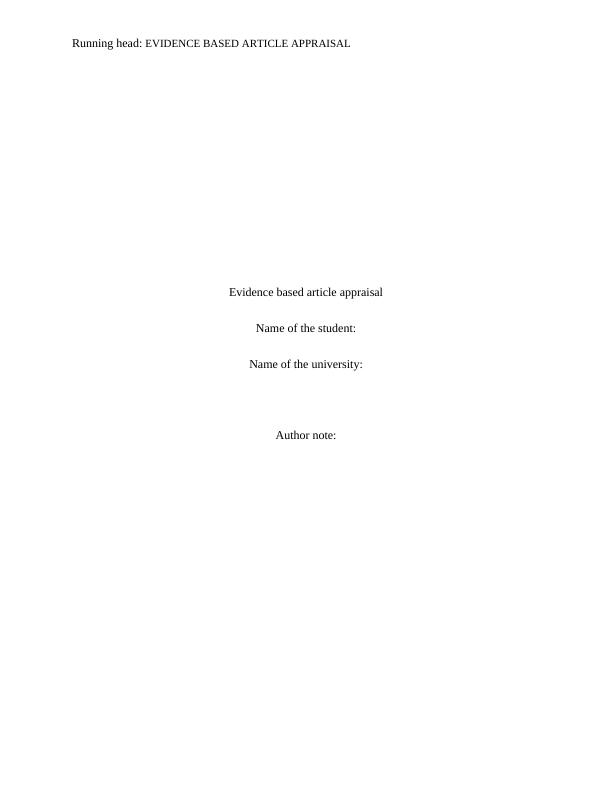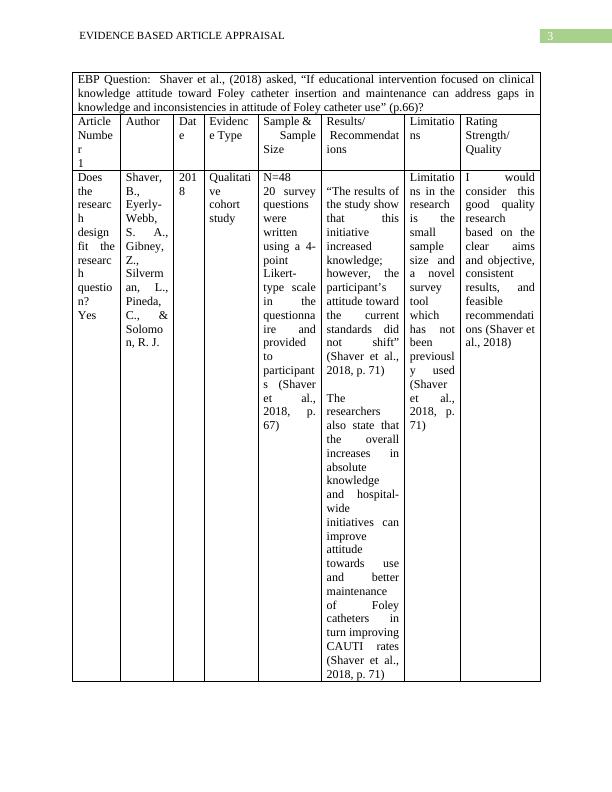Evidence Based Article Appraisal for Urinary Catheterization Studies
This chapter provides an overview of the various types of research evidence and information on appraising the strength and quality of research evidence. It also describes types of nonresearch evidence and explains strategies for evaluating such evidence.
12 Pages2263 Words397 Views
Added on 2023-06-08
About This Document
This article provides an evidence-based appraisal of studies related to urinary catheterization, including their research design, sample size, results, limitations, and recommendations. The studies focus on topics such as the use of cost analysis systems to reduce unnecessary catheterization, educational interventions to improve knowledge and attitudes towards catheter use, and the effectiveness of novel catheter systems in reducing infections. The article also examines the association between catheter use and infectious morbidity in cervical ripening and induction of labor.
Evidence Based Article Appraisal for Urinary Catheterization Studies
This chapter provides an overview of the various types of research evidence and information on appraising the strength and quality of research evidence. It also describes types of nonresearch evidence and explains strategies for evaluating such evidence.
Added on 2023-06-08
ShareRelated Documents
End of preview
Want to access all the pages? Upload your documents or become a member.




